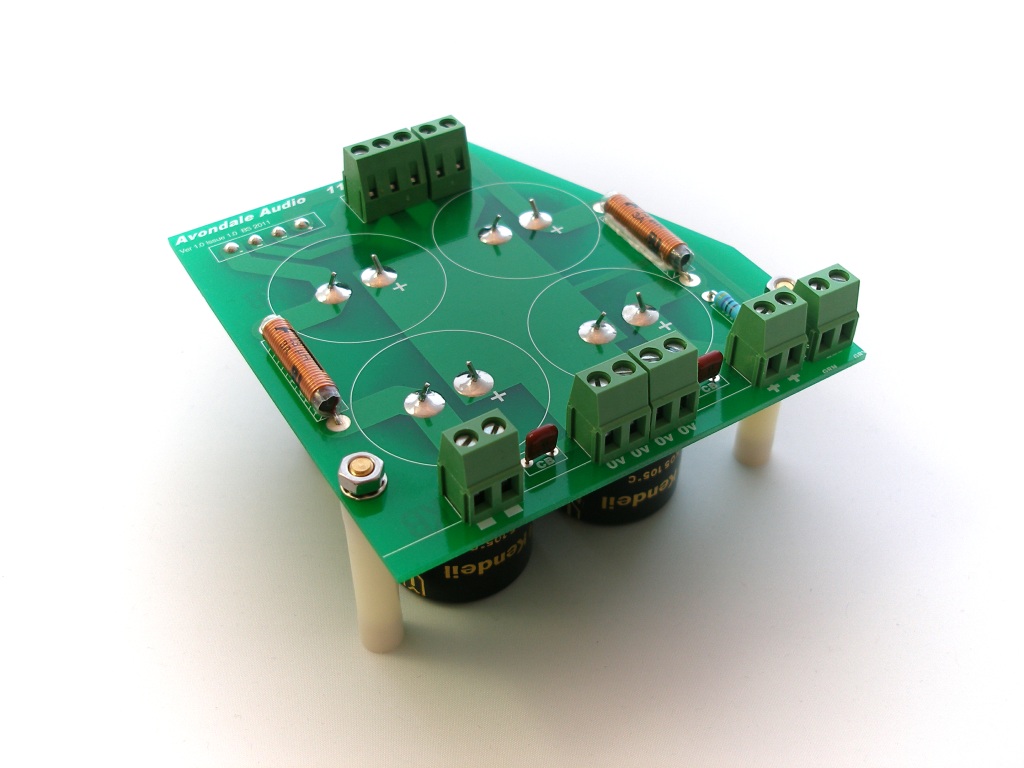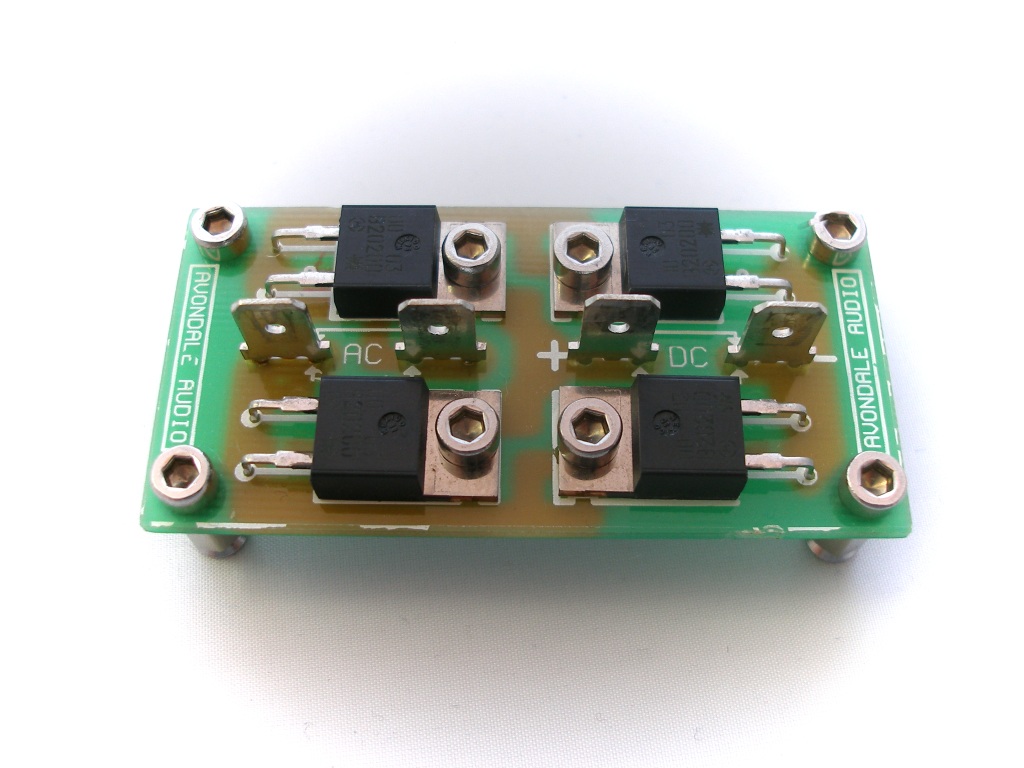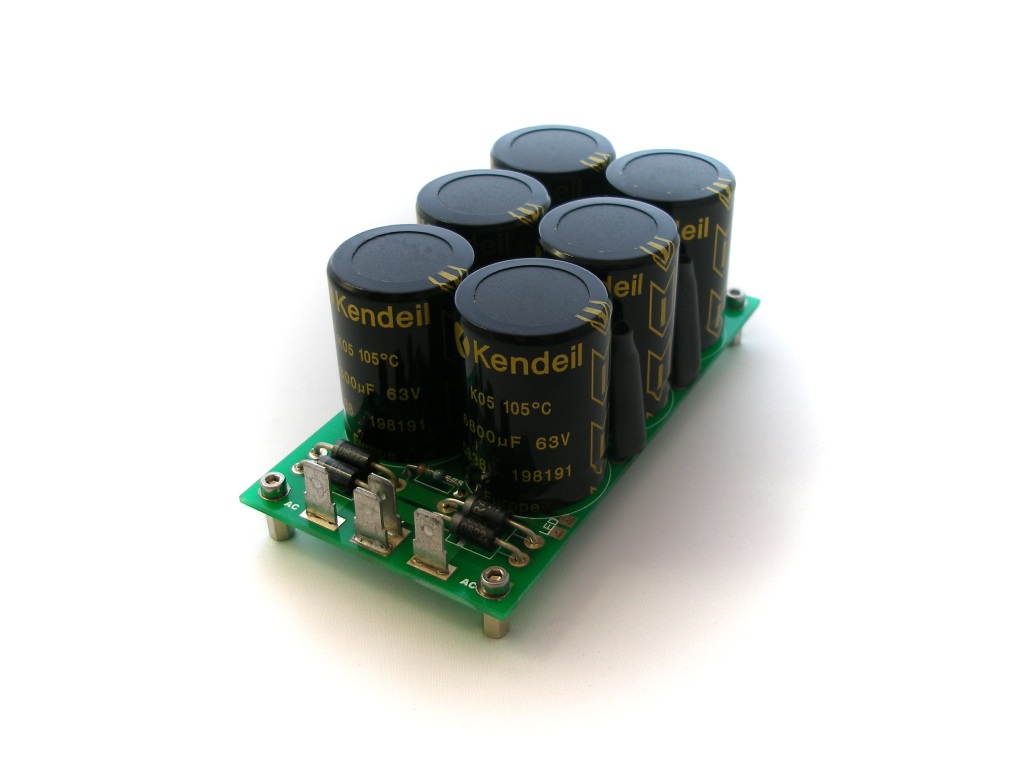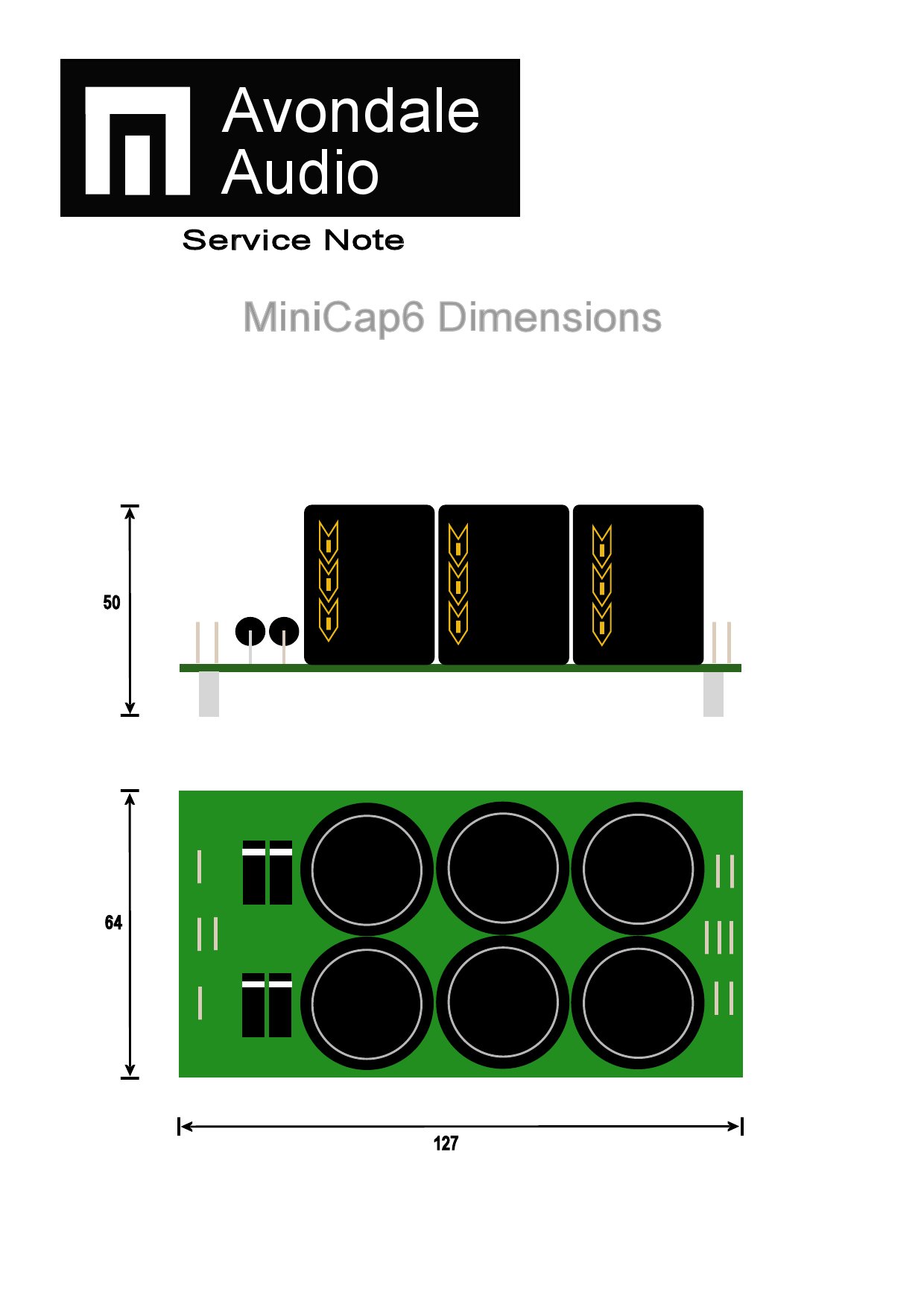MiniCap 6 Power Supply Module
- The Avondale MiniCap 6 power supply was originally developed for NAP110/140 owners, and since its original introduction the MiniCap 6 has become an extremely popular choice among DIY audiophiles for power supplies in a large variety of applications.Most power supply sections in Hifi amps and external supplies consist of, after a transformer, nothing more, than a cheap bridge rectifier and a pair of large, inexpensive reservoir capacitors.
- This solution, while adequate for basic operation, will generally deliver a slower, less musical sound than can be attained with some added care and attention to the design.
- Considering that the power supply feeds all of the delicate sections in the amplifier circuit, as well as the large output devices – stable power supply rails, especially under heavy transient swings, are required for clear sound reproduction.
- We have taken the extra steps above the standard design to use a CLCLC circuit arrangement i.e capacitor – inductor – capacitor – inductor – capacitor.
- Using a bank of smaller capacitors, split using inductors rather than two large units greatly improves the speed of the amplifier. Moreover, noise levels are reduced as the charging times have been cut. In addition we have also selected ultra fast, high current rectification diodes as standard to further increase the signal to noise ratio.
- Using this improved design, as well as utilising cherry picked components for high performance and ease of installation we are proud to offer you the Avondale Minicap 6 power supply.
NAP110 Power Supply Upgrade Module
The new Avondale NAP 110 power supply has been developed for the many owners of that classic Naim half width power amplifier. The weakest section in the original NAP110 is indeed its power supply. Though it sports a good quality 100va toroid, the rest of the supply was crude, inexpensive and slow. Given that the power supply in a NAP 110 feeds all of the delicate sections in the amplifier circuit, as well as the large output devices – stable power supply rails, even under heavy transient swings, are required for clear sound reproduction. In addition to this we have taken the step to use a CLC (capacitor -inductor – capacitor) circuit arrangement. Using a bank of smaller capacitors, split using inductors rather than two large units greatly improves the speed of the amplifier, moreover noise levels are reduced as the charging times have been cut. Using this improved design, as well as utilizing cherry picked components for high performance and ease of installation. We are proud to bring you the new Avondale NAP 110 power supply. A few of the immediate upgrades in the layout and materials are: · High quality PCB with extra large, high current tracks· Four 10,000uF 50v Kendeil electrolytic capacitors· Proven, rapid CLC circuit with high current inductors· Built in LED ballast resistor· Panasonic film bypass capacitors· High current bridge rectifier· Easy, no soldering, screw connectors for all connections Suited to the Naim NAP 110 power amplifier, though the simple modular design lends itself perfectly to those who would like to try one or two in their own build.

Full Wave Bridge Module
** Please note the price is for two modules i.e. sold in pairs. Photo shown is a single module.Bridge rectifiers. Often overlooked, yet a crucial stage when considering high performance audio. Suited to a vast array of designs, for use on output sections or front end only designs, the simple modular design lends itself perfectly to those who would like to try them in their own build. The standard parts used in mainstream amplifiers are multiple 1N40xx/1N54xx series, or more popular, a cheap all in one bridge rectifier from the KBPC series or the like. While inexpensive, their ability to allow modules farther down the line to perform at their best is severely affected. In order to attain ultimate performance in this area we have selected the well known, more expensive, Schottky series of rectification diodes. Named after the German physicist, Walter H. Schottky, these components allow higher musical performance due to much faster switching and zero reverse recovery transients. A few of the qualities of Les Wolstenholme’s diminutive PCB layout and materials are: · High quality PCB with minimal length, high current tracks· Individual, high current (20 Ampere) Schottky diodes· Easy, no soldering, push on connectors





